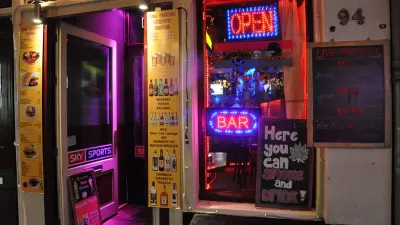Marijuana production comes down to a question of the availability of industrial zoning. Denver is the poster child, but other cities are seeing similar trends.

"As one of the first states to legalize recreational marijuana in 2012, Colorado has become a laboratory for the regulation and licensing of the cannabis industry," according to an article by Charlotte West. "Due to industrial zoning requirements, most of Denver's grow operations have been concentrated in low-income, predominantly minority neighborhoods."
The result of this consolidation of marijuana uses in low-income, minority neighborhoods hasn't been a spike in crime, as many legalization opponents feared. Rather, the effect has been a spike in commercial rents.
The phenomenon has not been limited to Colorado. From California to Maine, the marijuana industry has fueled a boom in the commercial real estate market. Property owners have been able to charge above-market rates for tenants operating in a grey area between state and federal law. As a result, property values—and property taxes—in surrounding areas have soared.
The article includes more details about the neighborhoods in Denver where these effects are most pronounced. West also describes the industrial zoning that enables the trend. Reports of marijuana business locating in Denver's minority neighborhoods date back to 2016, much sooner after legalization became law.
FULL STORY: POT WAREHOUSES IN DENVER ARE BOOMING—AT THE DETRIMENT OF LOW-INCOME NEIGHBORHOODS

Alabama: Trump Terminates Settlements for Black Communities Harmed By Raw Sewage
Trump deemed the landmark civil rights agreement “illegal DEI and environmental justice policy.”

Planetizen Federal Action Tracker
A weekly monitor of how Trump’s orders and actions are impacting planners and planning in America.

How Atlanta Built 7,000 Housing Units in 3 Years
The city’s comprehensive, neighborhood-focused housing strategy focuses on identifying properties and land that can be repurposed for housing and encouraging development in underserved neighborhoods.

In Both Crashes and Crime, Public Transportation is Far Safer than Driving
Contrary to popular assumptions, public transportation has far lower crash and crime rates than automobile travel. For safer communities, improve and encourage transit travel.

Report: Zoning Reforms Should Complement Nashville’s Ambitious Transit Plan
Without reform, restrictive zoning codes will limit the impact of the city’s planned transit expansion and could exclude some of the residents who depend on transit the most.

Judge Orders Release of Frozen IRA, IIJA Funding
The decision is a victory for environmental groups who charged that freezing funds for critical infrastructure and disaster response programs caused “real and irreparable harm” to communities.
Urban Design for Planners 1: Software Tools
This six-course series explores essential urban design concepts using open source software and equips planners with the tools they need to participate fully in the urban design process.
Planning for Universal Design
Learn the tools for implementing Universal Design in planning regulations.
Caltrans
Smith Gee Studio
Institute for Housing and Urban Development Studies (IHS)
City of Grandview
Harvard GSD Executive Education
Toledo-Lucas County Plan Commissions
Salt Lake City
NYU Wagner Graduate School of Public Service




























